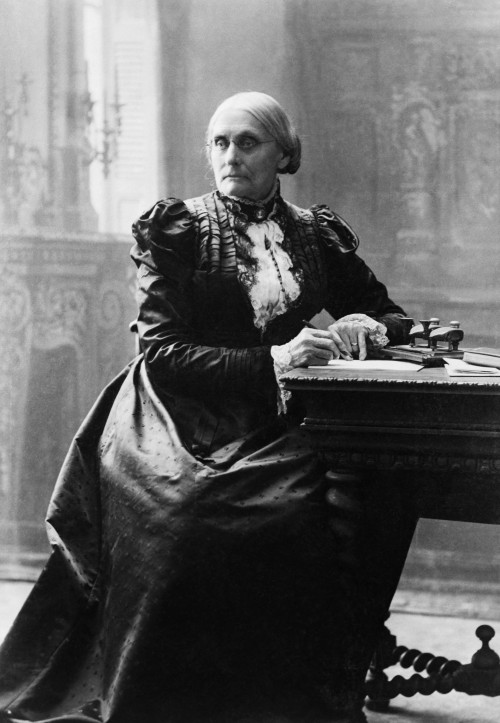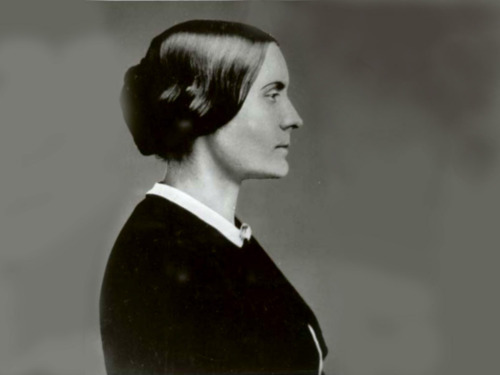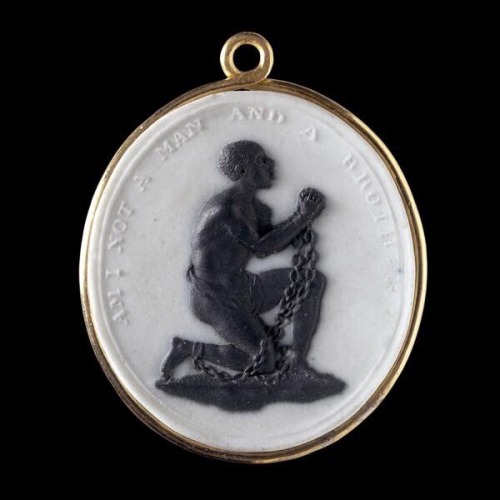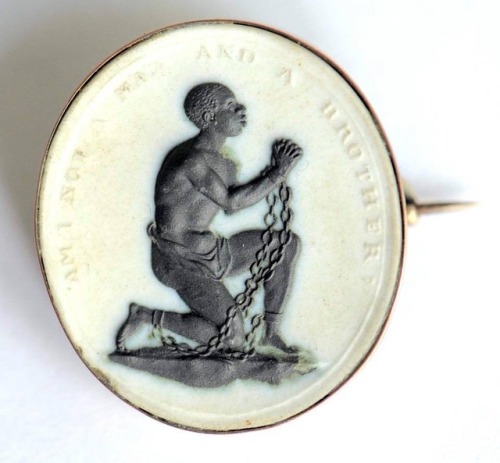#abolitionist
“For those of you who do not know me…”: Introducing Porphyrion Rascoe aka Perry Cooper.
(Photo:Scott Pitts)
Post link
Remembering the amazing Harriet Tubman, who died on this day, March 10, 1913, in Auburn, New York.


Daguerreotype portrait of British abolitionist and Member of Parliament George Thompson taken by photographer Richard Beard, c. 1841.
Source: Boston Public Library.
Post link
DECEMBER 12 - SOJOURNER TRUTH
Sojourner Truth,born Isabella (“Bell”) Baumfree, was an African-American abolitionist and women’s rights activist. Truth was born into slavery in Swartekill, Ulster County, New York, but escaped with her infant daughter to freedom in 1826. After going to court to recover her son, in 1828 she became the first black woman to win such a case against a white man.
She gave herself the name Sojourner Truth in 1843. Her best-known speech was delivered extemporaneously, in 1851, at the Ohio Women’s Rights Convention in Akron, Ohio. The speech became widely known during the Civil War by the title “Ain’t I a Woman?,” a variation of the original speech re-written by someone else using a stereotypical Southern dialect; whereas Sojourner Truth was from New York and grew up speaking Dutch as her first language.
During the Civil War, Truth helped recruit black troops for the Union Army; after the war, she tried unsuccessfully to secure land grants from the federal government for former slaves.
In 2014, Truth was included in Smithsonian magazine’s list of the “100 Most Significant Americans of All Time”.
Text for today’s post was taken from Wikipedia. Please consider donating a few minutes to make a submission to Celebrate Women before the year is over.
Post link
NOVEMBER 30 - LYDIA MARIA CHILD
Remembered for penning the popular children’s poem “Over the River and Through the Wood”, Lydia Maria Child often shocked audiences from the 1830s to the 1960s with her extremely liberal views. She called for the emancipation of slaves without any compensation to slaveholders, believing that women could not make significant progress in their rights until slavery was abolished.
Child’s 1833 work An Appeal in Favor of That Class of Americans Called Africans is said to be the first anti-slavery book published in the United States. She also wrote fictional short stories in support of her anti-slavery beliefs, often exploring how sexual exploitation affected both the enslaved and the slaveholder’s family. The more she delved into these concepts, the more negative reactions she received from readers.
This was not, however, Child’s first taste of controversy. In the mid-1820s, she published a historical romance novel entitled Hobomok: A Tale of Early Times, writing under the anonymous pseudonym “an American”. The book caused quite a stir in the literary community due to its central relationship - an interracial marriage between a white woman and a Native American man.
Decades later, Child would publicly endorse Native American rights, compiling various pamphlets throughout the 1860s. One of her pieces, An Appeal for the Indians, called upon government officials and religious leaders to make a difference, leading to the establishment of the US Board of Indian Commissioners in 1869.
Post link
DECEMBER 29 - SUSAN B. ANTHONY
Susan Brownell Anthony was an American social reformer and feminist who played a pivotal role in the women’s suffrage movement. Born into a Quaker family committed to social equality, she collected anti-slavery petitions at the age of 17. In 1856, she became the New York state agent for the American Anti-Slavery Society.
In 1851, she met Elizabeth Cady Stanton, who became her lifelong friend and co-worker in social reform activities, primarily in the field of women’s rights. In 1852, they founded the New York Women’s State Temperance Society after Anthony was prevented from speaking at a temperance conference because she was a woman. In 1863, they founded the Women’s Loyal National League, which conducted the largest petition drive in the nation’s history up to that time, collecting nearly 400,000 signatures in support of the abolition of slavery. In 1866, they initiated the American Equal Rights Association, which campaigned for equal rights for both women and African Americans.
In 1868, they began publishing a women’s rights newspaper called The Revolution. In 1869, they founded the National Woman Suffrage Association as part of a split in the women’s movement. In 1890 the split was formally healed when their organization merged with the rival American Woman Suffrage Association to form the National American Woman Suffrage Association, with Anthony as its key force. In 1876, Anthony and Stanton began working with Matilda Joslyn Gage on what eventually grew into the six-volume History of Woman Suffrage. The interests of Anthony and Stanton diverged somewhat in later years, but the two remained close friends.
In 1872, Anthony was arrested for voting in her hometown of Rochester, New York, and convicted in a widely publicized trial. Although she refused to pay the fine, the authorities declined to take further action. In 1878, Anthony and Stanton arranged for Congress to be presented with an amendment giving women the right to vote. Popularly known as the Anthony Amendment and introduced by Sen. Aaron A. Sargent (R-CA), it became the Nineteenth Amendment to the U.S. Constitution in 1920.
Anthony traveled extensively in support of women’s suffrage, giving as many as 75 to 100 speeches per year and working on many state campaigns. She worked internationally for women’s rights, playing a key role in creating the International Council of Women, which is still active. She also helped to bring about the World’s Congress of Representative Women at the World’s Columbian Exposition in Chicago in 1893.
When she first began campaigning for women’s rights, Anthony was harshly ridiculed and accused of trying to destroy the institution of marriage. Public perception of her changed radically during her lifetime, however. Her 80th birthday was celebrated in the White House at the invitation of President William McKinley. She became the first non-fictitious woman to be depicted on U.S. coinage when her portrait appeared on the 1979 dollar coin.
Text for today’s post was taken from Wikipedia.
Post link
She’s the face on that weird dollar coin you get from the airport cart machine and one of America’s original push girls. Susan B. Anthony was involved in activism and abolitionist movements since before she could walk, thanks to growing up in a Quaker household. And by the time she hooked up with Elizabeth Cady Stanton, she was an unstoppable force for women’s rights. So, the next time you end up with a Susan B. Anthony dollar, think big!
Tell your friend she’s got a little Susan in her. Reblog now to give her a little push.
Post link
AbolitionistTheodore Dwight Weld (1803 - 1895) sits for a portrait with his Granddaughter - at Pelham’s Studio, 44 Boylston Street in Boston - late 1800s
Post link
Remembrance …’Am I not a man and a brother?’
..Yes, thou art a man and brother,
Though thou long has groaned a slave,
Bound with cruel cords and tether
From the cradle to the grave!
………
Yes, thou art a man and brother,
Though we long have told thee nay;
And are bound to aid each other,
All along our pilgrim way..
(Extracts from The Anti-Slavery Harp compiled by William Wells Brown Boston: Bela Marsh, 1848)
Images:
The Wedgwood medallion was the most famous image of a black person in all of 18th-century art. Josiah Wedgwood, Britain’s renowned potter, was a man of conscience, deeply interested in the consequences of the American War of Independence and the French Revolution.
From 1787, this iconic image appeared on medallions and plaques to promote the abolition of the slave trade. The cameo was used by both men & women for personal ornament on snuff-box lids, shoe buckles, hair pins, pendants, and bracelets. Many versions of the image also found their way onto the surface of artifacts made in ceramic, metal, glass and fabric.
On this day:
Remembering 500th anniversary of one of history’s most tragic and significant events – the birth of the Africa to America transatlantic slave trade. On 18 August 1518 the King of Spain, Charles I, issued a charter authorising the transportation of slaves direct from Africa to the Americas. Over the subsequent 350 years, at least 10.7 million black Africans were transported between the two continents. A further 1.8 million died en route.
Further information:
https://www.independent.co.uk/news/world/americas/transatlantic-slave-trade-voyages-ships-log-details-africa-america-atlantic-ocean-deaths-disease-a8494546.html
National museum of American History
http://americanhistory.si.edu/collections/search/object/nmah_596365
Wedgwood Museum
http://www.wedgwoodmuseum.org.uk/learning/discovery_packs/pack/lives-of-the-wedgwoods/chapter/slavery
Post link
Frederick Douglass was beautiful! Why is his portrait in the National Gallery in DC so lamely racially ambiguous?
(that’s rhetorical)Post link
You’re in NO way pro-life. People against abortion are only anti-choice. Taking away a women’s right to choose what to do with HER body.
To bad it’s not just her body. Woman can choose whatever they want when it does not affect another human being. What about the babies choice? Does she not have a say? She didn’t choose to be conceived.

Even though the Trump Administration refuses to put Harriet Tubman on the $20 bill, this is the picture they should use because she was a badass.
The prompt: Write a List Poem; June’s Day 1 of 5
photo by: Kon Karampelas
My list came from various notes I’ve taken in response to the ways I live as a Black woman:
- Adjust to make you more comfortable
- Choose a gentler phrase
- Smile to mask anger
- De-center my voice from our conversation
- Wait to see if you will move over
- Move over first because you never do
- Search online for images like me that I…
if you support pornography and prostitution, you are not a leftist and certainly not a feminist.
i remember seeing a video by a porn company in which a man takes his partner’s clothes off. he then makes her lay down and starts hitting her body. she wimpers “why are you doing that, baby?!” deny it all you want, this is what you support by watching porn.
nothing says white feminism like supporting the sex industry.















